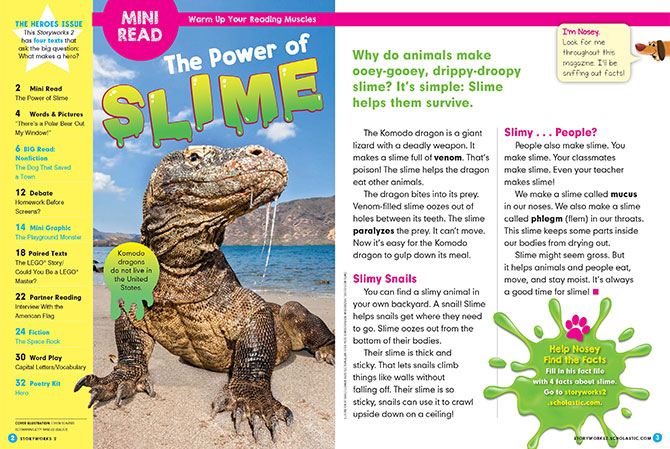Do a Quick Poll (5 minutes)
- Get your students excited to read. Do a poll: How many of your students think that their bodies can make slime? Make a quick T-chart to tally their votes.
- Now tell them they are going to read a short article about SLIME
Preview the Photo (3 minutes)
- Look at the big photo of the Komodo dragon on page 2 of the magazine.
- Ask students what they notice about this animal. Can they see any interesting features?
- Be sure to draw their attention to the slime dripping from its mouth! They are going to read about what that slime is for.
Introduce Nosey (3 minutes)
- Point out our little doggie character Nosey at the top of page 3.
- Ask someone to read Nosey’s voice bubble.
- Explain that Nosey is going to be popping up throughout their Storyworks 2 magazine. Not only does Nosey have a long nose to sniff out facts, but also, she’s just pretty nosy. She’s curious and wants to know more about everything.







